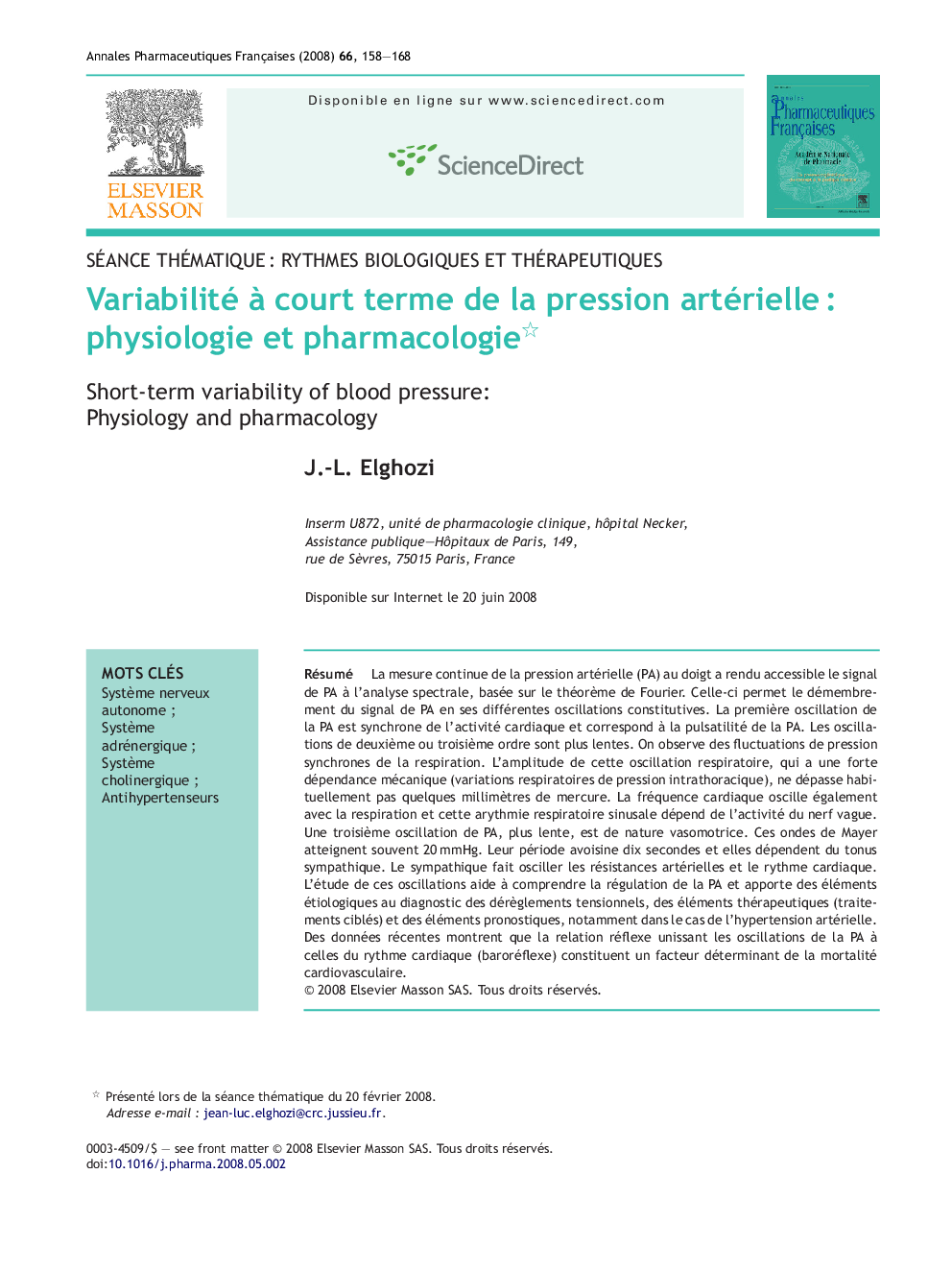| Article ID | Journal | Published Year | Pages | File Type |
|---|---|---|---|---|
| 2478391 | Annales Pharmaceutiques Françaises | 2008 | 11 Pages |
Abstract
Non invasive continuous measurement of blood pressure (BP) is currently performed at the finger level. The various oscillations of BP are distinguished using spectral analysis based on the fast Fourier transform. The first order oscillation of BP is synchronous with the heart beat and generates pulsaltile changes in BP. Second order oscillations are generated by respiration and depend on intrathoracic pressure changes. They do not exceed few millimeters of mercury. Heart rate also oscillates with respiration. This respiratory sinus arrhythmia depends on vagal activity. A slower third order oscillation also called 10-s period rhythm or Mayer waves depend on vascular tone changes. These waves may reach 20Â mmHg. Mayer waves reflect oscillations in resistance vessels and depend on sympathetic discharges. Sympathetic nerves determine oscillations in resistance vessels and cardiac rhythm at the same 0.1Â Hz frequency. A better understanding of these oscillations helps in understanding BP regulatory mechanisms and in treating BP disorders. Prognosis of arterial hypertension also depends on these BP fluctuations. Recent time and frequency domain developments in the analysis of the reflex relationship between BP and heart rate allow the calculations of indexes of spontaneous baroreflex sensitivity. Baroreflex sensitivity is a new indicator of cardiovascular risk.
Keywords
Related Topics
Health Sciences
Pharmacology, Toxicology and Pharmaceutical Science
Drug Discovery
Authors
J.-L. Elghozi,
